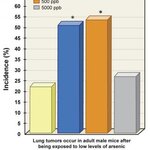Pharmacology

For two decades, women at risk of developing placental blood clots have been prescribed the anticoagulant low molecular weight heparin (LMWH) but it's ineffective, according to a clinical trial published today in The Lancet.
As many as one in 10 pregnant women have a tendency to develop thrombophilia
- blood clots in their vein. These women have been injected with LMWH daily, which means hundreds of needles over the course of their pregnancy.
A randomized clinical trial led by Dr. Marc Rodger, a senior scientist at the Ottawa Hospital Research Institute who heads up the…
Pharmaceutical companies are in a tough position; they are highly regulated, trials are expensive, new products fail most of the time, and if they are successful, everyone complains the cost is too high while the company tries to make money before it goes generic.
In the UK, the company with the best antibiotic pipeline in the world, AstraZeneca, is trying to sell that business, because they don't think they will ever make money at it given current restrictions.
Government is not ready to fill in the gap, it will be far too expensive for academics, who are not used to having to produce…

Ketamine has been used by emergency departments for analgesia, sedation and amnesia for rapid, life-saving intubation in critically ill patients but decades-old studies suggested it raised intracranial pressure.
A systematic review of 10 recent studies comparing ketamine to sufentanil, fentanyl and other pharmacological agents (vasopressors, neuromuscular blocking agents, sedatives) found no differences in intracranial and cerebral pressures of patients who had been treated with them.
Studies assessing patients sedated with ketamine found no difference in neurological outcomes…

A multicenter team of researchers report that in a phase III clinical trial, a combination drug therapy cures chronic hepatitis C in the majority of patients co-infected with both HIV and hepatitis C.
"In many settings, hepatitis C is now a leading cause of death among HIV co-infected patients," says Mark Sulkowski, M.D., medical director of the Johns Hopkins Infectious Disease Center for Viral Hepatitis and professor of medicine at the Johns Hopkins University School of Medicine. Approximately one-third of HIV patients in the United States have hepatitis C, with an estimated 7 million co-…

Niacin has been a mainstay cholesterol therapy for 50 years but it should no longer be prescribed for most patients due to potential increased risk of death, dangerous side effects and no benefit in reducing heart attacks and strokes, according to an editorial in the New England Journal of Medicine.
The editorial by Northwestern Medicine® preventive cardiologist Donald Lloyd-Jones, M.D., is based on a large new study that looked at adults, ages 50 to 80, with cardiovascular disease who took extended-release niacin (vitamin B3) and laropiprant (a drug that reduces face flushing caused by…

Researchers have created a combination drug that controls both tumor growth and metastasis. By combining a COX-2 inhibitor, similar to Celebrex, and an epoxide hydrolase (sEH) inhibitor, the drug controls angiogenesis (blood vessel formation), limiting a tumor's ability to grow and spread.
Both COX and sEH enzymes control lipid signaling, which has long been associated with inflammation, cell migration, proliferation, hypertension and other processes. COX inhibitors block production of inflammatory and pain-inducing lipids, while sEH inhibitors preserve anti-hypertensive, anti-inflammatory…

Mice exposed to arsenic in drinking water developed lung cancer in a new study by researchers at the National Institutes of Health have found.
In the study, researchers gave mice orders of magnitude acceptable limits of arsenic in water - 5X the EPA maximun, 50X and 500X. The reason they used so much is because mice need to be exposed to greater concentrations of arsenic in drinking water than humans to achieve the same biological dose and similar health effects. Arsenic in public drinking water cannot exceed 10 parts per billion (ppb) by U.S. Environmental Protection Agency…

Hippies on LSD in the 1960s described it as a 'dream state' and a new study finds that is a pretty accurate description.
Researchers recently examined the brain effects of the psychedelic chemical in magic mushrooms, called psilocybin, using data from brain scans of volunteers who had been injected with the drug. The results were that brains display a similar pattern of activity during a mind-expanding drug trip as it does during dreams.
Psychedelic drugs are unique among other psychoactive chemicals in that users often describe ‘expanded consciousness,’ including enhanced associations, vivid…

Recent meta-analyses of the efficacy of second-generation antidepressants for youth have concluded that they possess anadvantage over placebo in terms of clinician-rated depressive symptoms, but no meta-analysis has included measures of quality of life, global mental health, self-esteem, or autonomy. Prior meta-analyses also did not include self-reports of depressive symptoms.
A recent article published in Psychotherapy and Psychosomatics reviewed the literature to understand the effects of antidepressant drugs on well-being in children and adolescents.
Results showed a non-significant…

Taking the street drug Ecstasy could lead to a potentially fatal weakening and rupture of the spinal cord artery, according to a new paper.
Posterior spinal artery aneurysms - a blood-filled swelling of the spinal cord artery, caused by a weakening and distension of the vessel wall - are rare, with only 12 cases reported to date. But all of them caused spinal bleeding which affected the function of the spinal cord.
Doctors discovered one of these aneurysms in a previously healthy teenager who had taken Ecstasy - MDMA. The drug acts on the sympathetic nervous system, sparking a sudden…